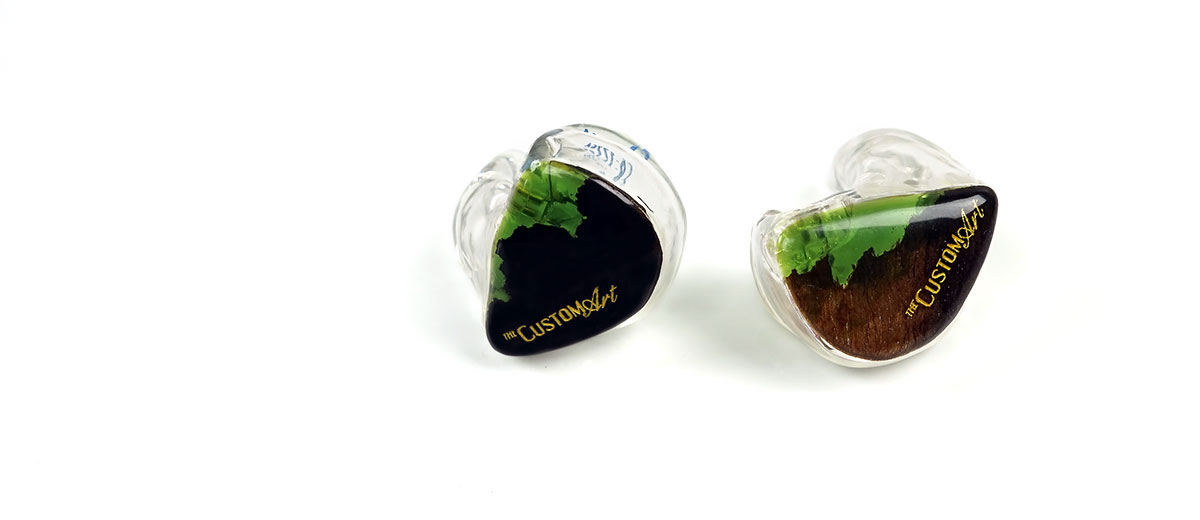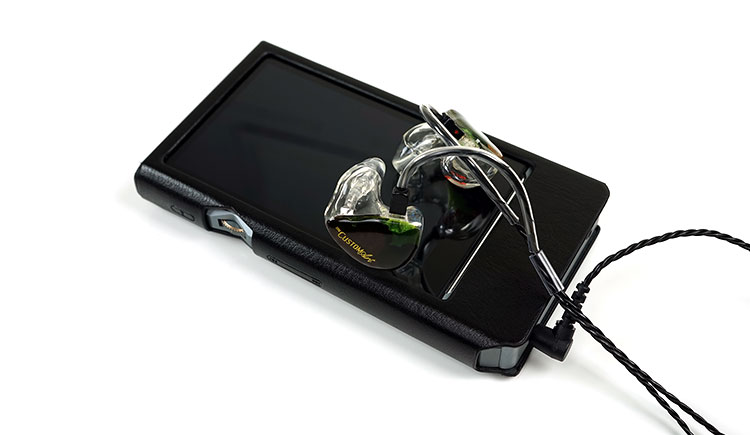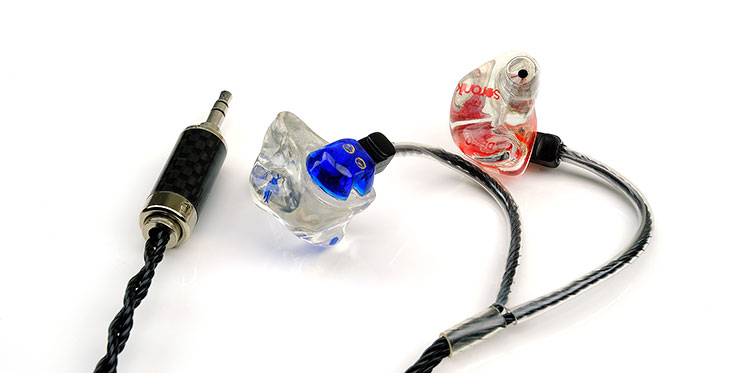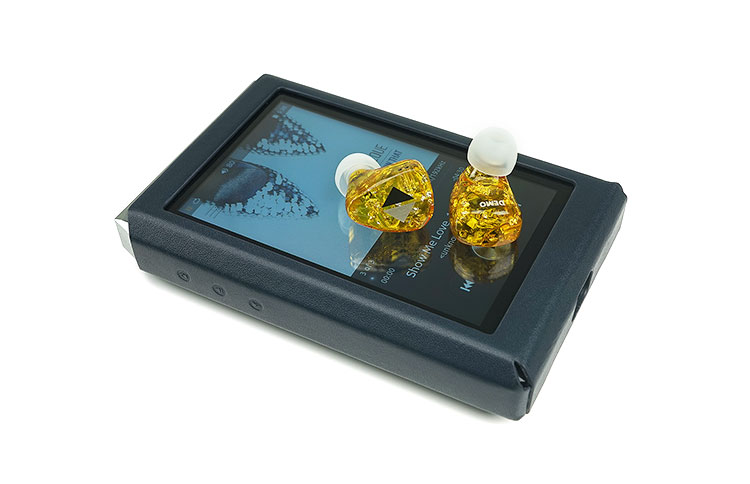Matchability
Efficiency
The FIBAE 1 is rated at a rather unusual 5.8 ohms and 109dB. I have never come across that type of resistance and sensitivity rating combination before which tells you a lot about how unique these Knowles drivers are.
Easy to Drive
In terms of the basic building blocks, the FIBAE 1’s single balanced armature is plenty efficient for good smartphones, DAPs, and portable amps. I am having to drop the volume substantially on my LG G6 and Axon 7 smartphones so as not to blow my ears out.
On the Cayin i5, the most I can comfortably go up to is around 30 digital steps in low gain which is Andromeda and Orion levels of efficiency. The X5ii was happy enough on 40-45 digital steps on low gain.
Sensitive to Noise
The downside as always with these levels of efficiency is the ability to pick up background hiss from higher noise floors and the FIBAE 1 is no exception to the rule.
Portable amps with strong power outputs are normally the Achilles heel so amps such as the ALO Audio V5 will throw out a little noise and hiss on the FIBAE 1 as will Lear’s FSM-02 V2 Class A output.
DAPs were much better with only a minor level of noise from the likes of the X5iii and virtually none on the i5. Mind you, it is not as distracting or annoying as the Andromeda or even the Orion but its present and you will hear it no question.
Just a small note the normal output of the Lear amp was excellent and very quiet. In comparison to the i5 and X5iii, there was a nice jump in dynamic range over the DAP jack outputs, particularly in the sub-bass response.
Impedance Factor
Shanling M2s
It is the flat impedance pitch that is central to the FIBAE 1 and we have just the real world tool to test that. The Shanling M2s, with its 4.8-ohms output impedance rating, is the Jekyll and Hyde of DAPs.
It does weird things to the sound signature of any IEM sub-20-ohm. The Andromeda gets brighter and more linear, the SE846 gets darker and the 99 Classics from Meze get a bit leaner. In short, this is a bit of a crapshoot if you are using the M2s because of the high output resistance.
Test Outcome
Comparing the performances of the M2s and the newer M3s which has an output rating of a very low <0.3Ω I honestly found zero change in the sound signature of the FIBAE 1. It did not sound thinned out in the low end, nor did it get darker.
Sure there are some volume and resolution differences due to the better DAC and amping setup of the M3s but this has nothing to do with the output resistance. Remember this is just a 5.8 -ohm rated IEM. The Andromeda is rated at 12.8-ohms and is all over the place with the M2s. In all the FIBAE 1 passed the impedance test with flying colors.
Select Comparisons
Soranik SK1
$450
Technical
The SK1 is a single BA 20-ohm 109dB rated IEM from Vietnamese specialist, Soranik. We reviewed this one earlier in the year and found it to be n-shaped smooth and intimate and a genuine joy for vocal lovers.
Much like the FIBAE 1 the SK1 works quite well of weaker amps and sources and does not require a huge amount of power to be driven. The only thing I was not keen on with smartphones and the SK1 was the slightly thinned out sound, especially the upper mids on the Axon 7 which had a slightly metallic overtone. The FIBAE 1 doesn’t tend to suffer from that as much and sounds closer to its sound signature than the SK1 on weaker sources.
The SK1 though is a better performer on noisier amps than the FIBAE 1. A good comparison was the LEAR FSM-02 V2 Class A output. On the SK1 it was very low. On the FIBAE 1, it had background hiss. This does mean the SK1 can likely handle a bit more power compared to the FIBAE 1 which retains its signature better on a wider range of sources.
Sound
The FIBAE 1 is a bit flatter and more neutral in its sounds with more lifelike or accurate instrumental timbre. The SK1 instead shoots for a smoother more euphoric sound with fuller and more forward sounding vocals, particularly female vocals.
The FIBAE 1 is has a bit more top end articulation and extension whereas the SK1 treble is smooth, laid back and rolled off beyond 5k with only the usual hifi peak around 12k to prevent it from sounding dark or overly attenuated.
Personally, I prefer the FIBAE 1 for instrumental work where the cleaner more accurate sounds more convincing. However, I have to give props to the SK1 for that fuller more forward sounding vocal performance that is at times captivating.
Aya Audio Nightingale YK1
$250
Technical
The YK1 is a single BA driver IEM rates at 24-ohms and 102dB. It is not as efficient as the FIBAE 1 and does need a better source than smartphones to drive it properly which the FIBAE 1 does not need.
On the plus side, it is much quieter on amp signals with higher noise levels with virtual silence on the Lear FSM-02 V2 portable amp for example and excellent hiss control such as the FiiO X7 AM3 single-ended and the FiiO X5iii.
Sound
The YK1 follows a similar path to the SK1 with a more mid-centric focus only it has a bit more treble energy and slightly less body in the bass. Compared to the FIBAE 1 it is still the more musical of the two with a bit more of a vocal presence.
What I did find interesting when comparing these two was the solidity of the FIBAE 1 low-end which I found to extend a little better and generate slightly superior power. It was largely the same with mids performance. The YK1 vocal presence is more forward but generally, instrumental timbre is a touch thinner as was the vocal performance. The SK1 is still king of vocals with richness and body I have yet to hear on any other single BA.
The treble body was also a bit better on the FIBAE 1. The YK1 treble energy and articulation are very good actually and on par with the FIBAE 1 in terms of extension. Certainly, it outperforms the single BA SK1 in terms of treble snap and sparkle. However, it is just a shade more brittle sounding with less body than the FIBAE 1.
Minerva Mi-Pro Artist
£385.00
Technical
This is a triple BA CIEM but a few reasons why I picked this one. The charts suggested a very similar response, at least on paper and the price point was in the same ballpark.
The Mi is rated at a huge 75 -ohms and 122dB so almost the complete opposite direction of the FIBAE 1. What that means is the Mi is a good deal quieter on higher noise floors and will scale that bit better with quality amping.
It not entirely suited to low powered smartphone amps in terms of resolution and dynamics. In fact, the impedance factor here plays a huge role in sucking the Minerva of dynamics and sounding generally quite thin and tinny. Despite its higher sensitivity rating, it is the FIBAE 1 that gets louder faster and generally reacts better to weaker sources in terms of sounding true to its signature.
Sound
Tonally, the FIBAE 1 is a little cleaner and more neutral-sounding than the Mi though not by a huge amount. Both have a little drop off at both ends of their response range with neither generating huge power from sub-bass or throwing out a ton of air and sparkle from their brilliance region.
The FIBAE 1 is a little brighter and quicker sounding to my ear with slightly less body. The Mi’s low end is a shade warmer in the mid-bass and a little fuller sounding in the lower mids and vocal presence. The FIBAE 1 plots a more neutral mid-range performance including its instrumental timbre compared to the slightly richer Mi signature.
Lower treble on the FIBAE 1 has a bit more energy and perceptible articulation than the Mi. The FIBAE 1, by the way, is not overly forward, it just sounds more forward compared to the Mi. The Mi has a lower treble rise also but its a bit more muted and falls away a touch quicker.
The difference is not huge and you do need to watch your volume matching when comparing these two as there is a 5-6 digital step difference on Hiby Music layered DAPs.
Our Verdict
Let’s start with the FIBAE 1 as an IEM priced at 300 EUR. This is a reasonably neutral sound signature with good tonal accuracy and just a mild kick in the low-end to keep everything from sounding overly sterile. It plays very well indeed with instrumentals with a clean and clear mid-range and an acceptable level of treble quality and quantity that outwits a few competing single BA designs.
The most interesting value-add is the flat impedance technology. On high impedance digital media players such as the Shanling M2s, it simply works and works very well indeed. Other IEM’s take a hissy-fit on this DAP, the FIBAE 1 does not. That is proof enough for me that Custom Art should continue developing this tech because I can’t wait to hear what Multi-driver signatures can do with it.
All of this and custom-designed to a very high standard for just 300 EUR. I would read the above paragraphs or two twice before moving on. Affordable CIEMs with a balanced and coherent signature such as this are rare.
FIBAE 1 Technical Specifications
- Single proprietary Balanced Armature
- Advanced Horn nozzle design
- 109dB @1kHz @0.1V
- Vented receiver for improved bass response
- 5.6 Ohm @1kHz (+-0.8 Ohm 10Hz-20kHz)
- Hollow Acrylic body
- 10Hz-16500Hz (+-10dB into IEC 60318-4 coupler)









